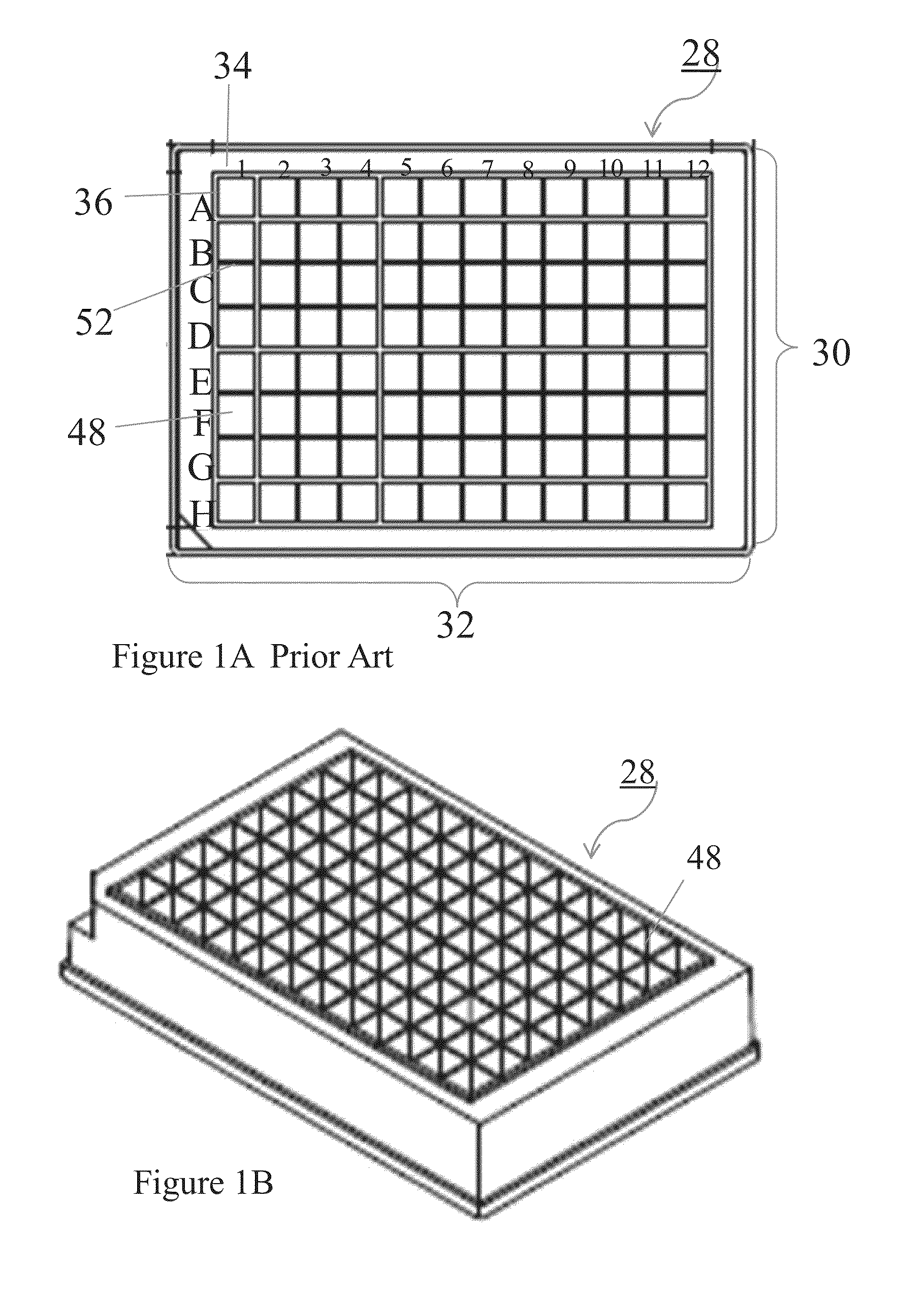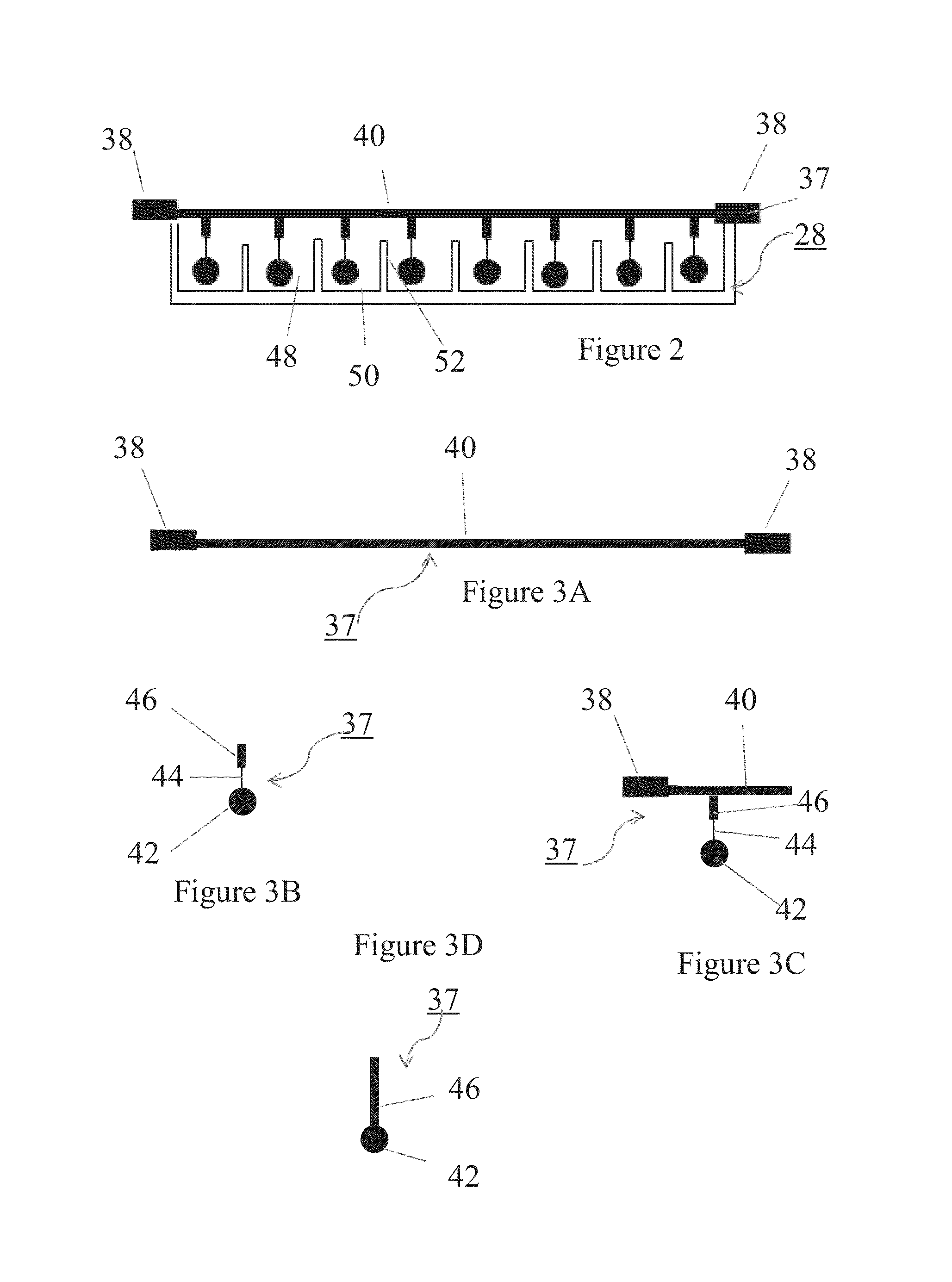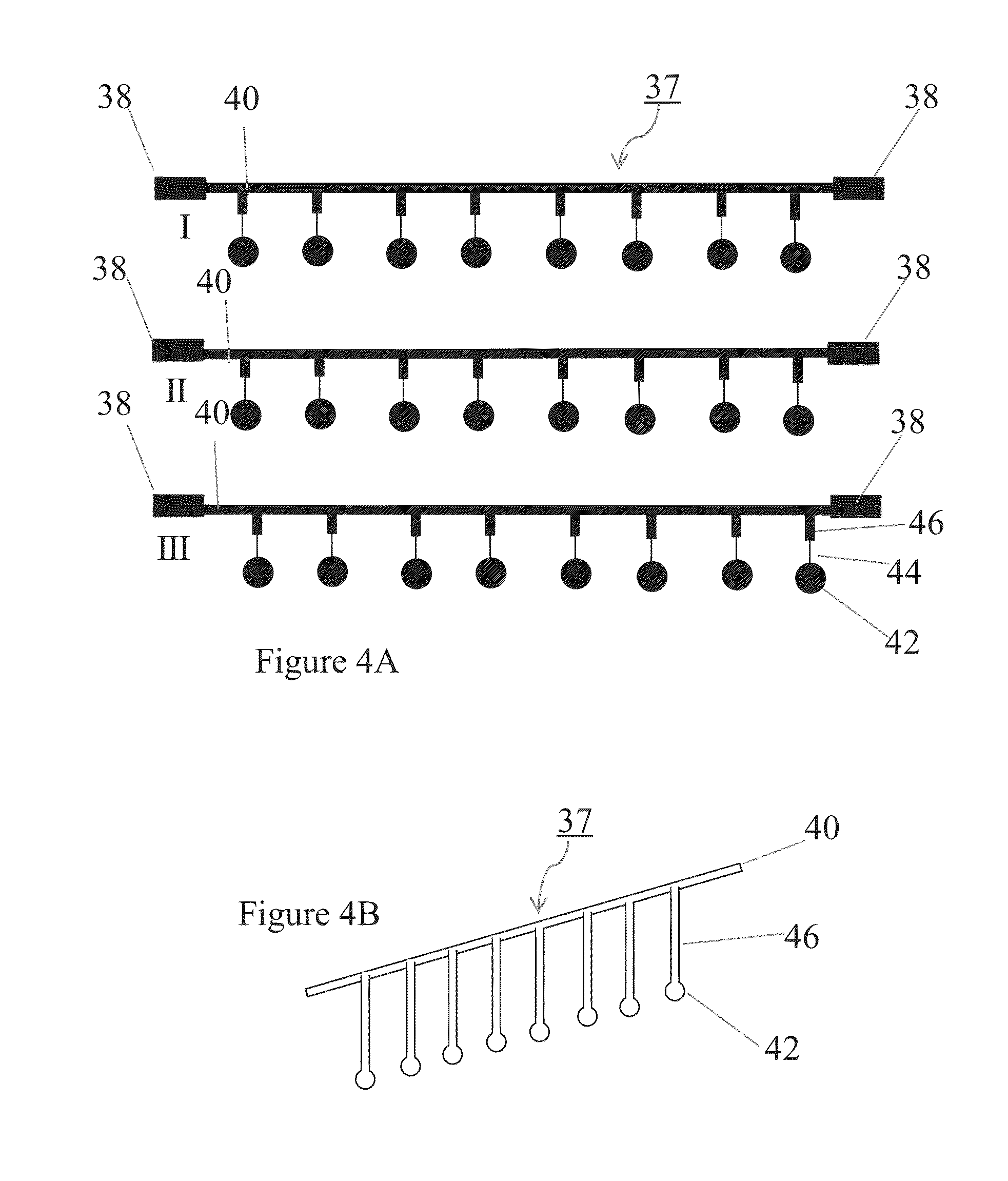Device and method to perform multiplex assays and target enrichment
a technology which is applied in the field of multiplex assay and target enrichment, can solve the problems of inability to perform the work of essential lab equipment, inability to and inability to efficiently and flexiblely test a few samples or a few analytes
- Summary
- Abstract
- Description
- Claims
- Application Information
AI Technical Summary
Benefits of technology
Problems solved by technology
Method used
Image
Examples
example 1
Coating of Analytes on the Beads in Large Quantity
[0097]When large batch of beads 42 on the strips 37 coated with a designated antibody or analyte are needed, they can be produced in the following process. A MobileArray™ device assembly is assembled as previously described and according to FIGS. 11A-11E. The screws 62 are placed in the screw holes 66 of the frame, with the tips of the screws face up. Multiple strips 37 of differing models as shown in FIG. 4A, or strips 37, preferably with an extra-long bar member 40 extending beyond the width of a well plate 29 for easy handling, aligned in order, each with 8 beads, are aligned on a frame 56, which are placed over a 96-well plate 29 having twelve columns 34 and eight rows 36, so that one bead from each strip falls into each well of the first column 34 of the 96 well plate 29. The second through twelfth columns 34 are filled in the same way. The removable divider cluster 68 is placed over the frame 56 so that it fits in the inner ope...
example 2
Coating of Analytes on the Beads in Small Quantity
[0099]When small batch of beads 42 on the strips 37 coated with a designated antibody or analyte are needed, they can be produced in the following process. Strips can be assembled in the same way as described in Example 1 above. This time, the assembly need not be removed out of the plate. Before putting on the divider cluster, a sample containing a specific antibody or analyte of interest at the optimal concentration in the optimal buffer corresponding to the specific antibody or analyte can be added to one or two columns of wells in the plate 29, depending on how many analytes of interest will be tested. For example, strips 37 in columns 1 to 3 are coated with antibody or analyte 1, columns 4 to 6 for antibody or analyte 2, columns 7 to 9 for antibody or analyte 3, and columns 10 to 12 for antibody or analyte 4. Solution can be added through the loading grooves 53 using a multichannel pipette. The amount of solution used should sub...
example 3
A Pre-Assembled MobileArray™ Multiplex ELISA Assembly in 96-Well Format
[0101]Manufacturers can make a strip assembly in 96-well format that measures 4 protein analytes (4 plex). Protein 1 capture antibody is coated on model I strips, protein 2 capture antibody on model II strips, protein 3 capture antibody on model III strips and protein 4 capture antibody on alternate model I strips (FIG. 4A). Manufacturers can include a frame fitting 4 strips in each column. As a result, there will be 4 strips I, II, III, I that correspond to each four different analytes of interest in one column 34. Columns 2 to 12 will be filled in the same way as for column 1. The strips will be secured in the MobileArray™ assembly (FIG. 11). The whole assembly can be vacuum packed and sealed, for instance in an aluminum package for long term storage. The storage conditions should be very similar to the current conventional singleplex ELISA plates. This sealed assembly package can be used in building a complete...
PUM
| Property | Measurement | Unit |
|---|---|---|
| volume | aaaaa | aaaaa |
| width | aaaaa | aaaaa |
| width | aaaaa | aaaaa |
Abstract
Description
Claims
Application Information
 Login to View More
Login to View More - R&D
- Intellectual Property
- Life Sciences
- Materials
- Tech Scout
- Unparalleled Data Quality
- Higher Quality Content
- 60% Fewer Hallucinations
Browse by: Latest US Patents, China's latest patents, Technical Efficacy Thesaurus, Application Domain, Technology Topic, Popular Technical Reports.
© 2025 PatSnap. All rights reserved.Legal|Privacy policy|Modern Slavery Act Transparency Statement|Sitemap|About US| Contact US: help@patsnap.com



